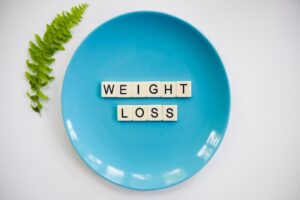Are you tired of fad diets that leave you feeling hungry and unsatisfied? Look no further than the ketogenic diet. This high-fat, low-carb eating plan has gained immense popularity in recent years for its potential weight loss benefits and ability to improve certain health conditions. But is it right for everyone? In this blog post, we’ll explore the pros and cons of the ketogenic diet, as well as what foods you can eat on it and some delicious recipes to try out. So grab a cup of coffee (with heavy cream, if you’re so inclined) and let’s dive into the world of keto!
What is the Ketogenic Diet?
The ketogenic diet, also known as the keto diet, is a low-carb and high-fat eating plan.
The goal of this diet is to get your body into a state of ketosis where it burns fat for energy instead of carbohydrates.
When following a ketogenic diet, you limit your carbohydrate intake to 20-50 grams per day while increasing your fat consumption.
By reducing carbohydrate intake and increasing fat consumption, the body enters a metabolic state called ketosis.
In this state, the liver begins to produce molecules called ketones that are used as fuel when glucose (sugar) levels in the blood are low.
The benefits of following such an eating plan include weight loss due to reduced calorie intake.
And increased satiety from higher fat consumption.
Additionally, research suggests that it may improve certain health conditions such as epilepsy and type 2 diabetes.
However, there are some potential downsides to consider before starting a keto diet – including nutrient deficiencies due to restricted food choices and side effects like headaches or constipation during the initial adaptation period.
Though, understanding what exactly constitutes a ketogenic diet can help you decide whether it’s right for you.
The Different Types of Keto Diets
When it comes to the Ketogenic Diet, there are different types of approaches that people can take. The standard ketogenic diet (SKD) is the most common and involves eating a high-fat, moderate-protein, and low-carb diet. This type of keto diet usually consists of 75% fat, 20% protein, and only 5% carbs.
Another type is the cyclical ketogenic diet (CKD), which involves periods of higher carb intake followed by periods of strict keto eating. This approach is often used by athletes who require more carbohydrates for intense workouts but still want to maintain ketosis.
Targeted ketogenic diets (TKD) involve consuming small amounts of carbs before or after exercise to fuel workouts without leaving ketosis. Meanwhile, high-protein ketogenic diets (HPKD) are similar to SKD but with a greater emphasis on protein intake.
Ultimately, the best approach depends on individual needs and goals. It’s essential to work with a healthcare provider or registered dietician when starting any new dietary program like Keto Diet in order to determine what works best for you while avoiding potential risks or complications associated with this kind of diet plan.
Pros and Cons of a Keto Diet
The ketogenic diet has become a popular choice for those looking to lose weight and improve their overall health. However, like any other diet, it comes with its own set of pros and cons.
One of the biggest advantages of a keto diet is that it can lead to significant weight loss in a short amount of time.
This is because the high fat, low carbohydrate content forces your body into a state of ketosis where it burns fat for energy instead of glucose from carbohydrates.
Another benefit is that many people report feeling more energized and focused on this diet due to stable blood sugar levels throughout the day.
Additionally, studies have shown that keto can help lower triglyceride levels which may reduce the risk of heart disease.
However, there are some potential downsides to consider when starting a keto diet.
The first few weeks can be difficult as your body adjusts to the new way of eating, often resulting in symptoms such as brain fog or fatigue known as “keto flu”.
Furthermore, maintaining long-term adherence to the strict macronutrient ratios required by keto diets can be challenging for some individuals and may result in nutrient deficiencies if not carefully planned.
Additionally, consuming large amounts of saturated fats found in typical ketogenic foods such as bacon or butter could increase cholesterol levels leading to negative health effects over time.
While research suggests that following a well-formulated ketogenic diet could offer numerous benefits including weight loss and improved metabolic markers – it’s important to weigh both sides before embarking on any new dietary changes.
What Foods to Eat on a Keto Diet?
Starting a ketogenic diet can be overwhelming, especially when it comes to figuring out what foods you can and cannot eat.
The keto diet is a high-fat, moderate-protein, low-carb diet that encourages the body to burn fat instead of carbs for energy.
Here are some foods you should focus on while following a keto diet:
Healthy Fats – Healthy fats should make up the majority of your caloric intake on the ketogenic diet.
These include avocados, olive oil, nuts and seeds (such as almonds and chia seeds), coconut oil, butter or ghee.
Proteins – Protein is important but not in excess; examples include grass-fed beef and poultry, fatty fish like salmon or tuna.
Low-Carb Vegetables – Leafy greens like spinach, kale or broccoli are nutrient-dense vegetables that contain minimal carbohydrates which makes them perfect for people trying to stick with their keto plan.
Dairy Products: Dairy products such as cheese , yogurt contains minerals, vitamins & proteins but should be consumed in moderation while doing ketosis.
By focusing on these types of food groups while avoiding high-carbohydrate options such as breads, cereals, pasta etc., you will set yourself up for success on your ketogenic journey!
Keto Recipes
Keto recipes are a great way to stay committed to the ketogenic diet while still enjoying delicious and satisfying meals.
One of the keys to success on any diet is variety, and the same holds true for keto.
Fortunately, there are many creative and tasty options available that will keep your taste buds happy.
One popular option is cauliflower crust pizza.
By swapping out traditional pizza dough with a base made from cauliflower, almond flour, eggs and cheese,
you can enjoy all your favorite toppings without compromising your carb intake.
Another favorite among keto dieters is zucchini noodles or “zoodles”.
These noodles are created by spiralizing zucchini into thin strands that resemble spaghetti.
They can be served with a variety of sauces and toppings to create endless meal possibilities.
For breakfast lovers, egg muffins make for an easy and portable option.
Simply whisk together eggs with vegetables like spinach or bell peppers before baking in a muffin tin until cooked through.
Don’t forget about dessert! There are many delicious keto-friendly sweet treats such as chocolate avocado mousse
or peanut butter cups made from coconut oil and stevia instead of sugar.
With these tasty options available at your fingertips, sticking to the ketogenic diet has never been easier or more enjoyable!
Alternatives to the Ketogenic Diet
While the ketogenic diet may be effective for weight loss and other health benefits, it may not be suitable for everyone.
For those who are looking for alternative diets, there are a number of options to consider.
One popular option is the Mediterranean diet which focuses on consuming healthy fats such as olive oil, nuts, and fish while limiting red meat and processed foods.
This diet has been linked to lower risk of heart disease and stroke.
Another choice is the vegetarian or vegan diet which eliminates animal products but includes a variety of fruits, vegetables.
whole grains, legumes and plant-based proteins like tofu or tempeh.
This type of eating plan can help reduce inflammation in the body and lower risks of cancer.
The DASH (Dietary Approaches to Stop Hypertension) diet is another alternative that emphasizes low-sodium foods
such as fruits, vegetables, lean protein sources and whole grains while reducing high-fat dairy products.
It’s been shown to improve blood pressure levels without drastic changes in food intake.
Ultimately it’s important to find an eating plan that works best with your lifestyle goals while providing all necessary nutrients needed for optimal health.
Conclusion
To sum it up, the ketogenic diet is a low-carb and high-fat diet that has gained popularity over the years.
It has been shown to have numerous health benefits such as weight loss, improved blood sugar control, and lower risk of heart disease.
However, like any other dietary regimen, the keto diet also has its downsides.
It can be difficult to maintain in the long run due to its strict rules on food intake.
Some people may also experience negative side effects like constipation or bad breath.
It’s important to consult with a healthcare professional before starting any new diet or exercise program.
They will be able to advise you on whether the ketogenic diet is safe for you based on your medical history and current health status.
Ultimately, while the ketogenic diet may work well for some individuals, it might not be suitable for everyone.
The key is finding a sustainable eating plan that works best for your individual needs and goals.








